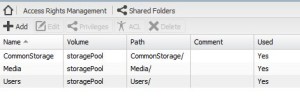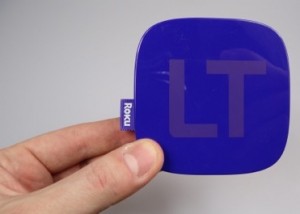Background
Openfiler had been serving me reliably for about four years but had begun to seriously slow down as my media pool grew. My project of ripping all my DVDs and BluRays to the pool had slowly increased the pool size. The data was spread across three independent drives in the server (I don’t use raid in that box).
I could increase storage as needed, it always worked, it sipped resources. Exactly what you want in storage software. The only problem was it was beginning to slow down. When I did larger transfers, it would start out at a reasonable pace but gradually slow as the transfer continued, usually down to 12-17MBs. On every day processes, this was not very noticeable, but anytime I needed to do a large transfer for any reason (backups to an external for an example), it became painfully apparent.
Now would be a perfect time to test drive another product. I spent a good amount of time on google, investigating options. But what I kept coming back to was a product called Open Media Vault. Strangely enough, when I looked back at my notes from three years ago, it was down to OMV or openfiler. Openfiler got the nod as it was much more mature, and OMV had not been out long enough to prove itself.
Benchmarks of existing infrastructure
I wished to first get an idea of how he existing OSes performed with data transfers. I used Xubuntu14, Win2003 and openfiler vms, plus the Windows backup box and my primary Win 7 machine. I tested with three datasets, and averaged the three runs. The first was a 69GB set of 98 files in 12 folders, the second was a 12GB family video, and the third was a five DVD rip block (25GB).
Test one was my from Windows PC to the various locations.
To Win 2003 VM: 61 MB/s
To openfiler: 23 MB/s always decreasing to 18
To xubuntu 14 LTS: 58 MB/s
To Backup PC: 28 MB /s
I then tested it the other direction from the vms to the Win 7 PC:
From 2003 vm: 70 MB/s
From openfiler: 38 down to 28 MB/s
From Xubuntu: 89 MB/s
Now I had an idea what performance the existing drives could give. Openfiler was significantly behind the rest of the pack on the vmware box.
Open Media Vault (OMV)
I decided to give OMV a spin on the existing storage (to give me a fair comparison to the existing openfiler). I downloaded the ISO image of OMV and installed (per their recommendations) into a virtual machine. I ran through the following steps:
- Installed the Logical Volume Manager (LVM) plug-in
- Created three small vmdk drives on the three physical drives (about 300GB in total)
- Added the drives to the physical volume (PV)
- created a volume group (VG)
- added the PVs to the VG
- Add the VG to the LVM
- Created a filesystem (ext4) on the LVM
- Created a shared folder and SMB share on the LVM
- Created two users to test with and assigned rights
This sounds like a lot of steps (and I might have skipped one or two) but it is logical and goes quickly. Now that I had some storage defined, I could do some testing. But…
In the meantime…
I knew that more storage would be needed on the server. Ideally, I would keep openfiler up and running during the transition. That would cover my backside, in case unforeseen issues popped up, and would allow me more time to get the settings figured out.
So I added more storage to my ESXi server, the Seagate 3TB NAS internal drive. I’m not necessarily recommending this drive as the first one I got was a dud, and it took a while to prove it to Seagate. But, in the end, I have one that is working just fine. (By moving to a drive larger than 2TB required me to upgrade ESXi from 4.1 to 5.1 but that was a trivial process.)
Now back to testing.
I ran many tests to and from the OMV pool. What I saw was a consistent 44MB/s write speed when dealing with a large number of small files, and about 56 MB/s when moving large files. Downloading large files from OMV to my Win 7 machine showed a nice 86 MB/s throughput. A bunch of small files yielded 75 MB/s. And what was nice to see is that the throughput remained quite consistent throughout the entire transfer (plus or minus 3 MB/s). I was suitably impressed and made the decision to move forward with the transition.
Transition
I learned a lot of how OMV worked through the test setup, so I applied the knowledge to setting up the production configuration. I installed and set it up on the new Seagate NAS drive. I ended up created a single volume group and created three shares from that pool.

I could then map the shares to whatever PCs they were needed from.

Some great features
OMV had some very cool features that OF had always lacked. The first was the ability to create users and give very granular rights. In addition, user home folders could be automatically generated (which is great in our house). The second was the integrated recycle bin. Every time you deleted something from the pool (either on purpose or by accident), it moved it to a recycle bin with the user’s folder. Very, very nice!
Fast Forward a Year
All this occurred back in January of 2014. OMV has been serving us very well. We have increased the amount of devices on the network this past year (phones, another two Rokus, another two Nooks), so it often happens that three (or more) devices are accessing data from OMV at the same time. No hiccups, no issues. Incremental backups go so much faster now. I have been very happy with Open Media Vault, and would definitely recommend it.




